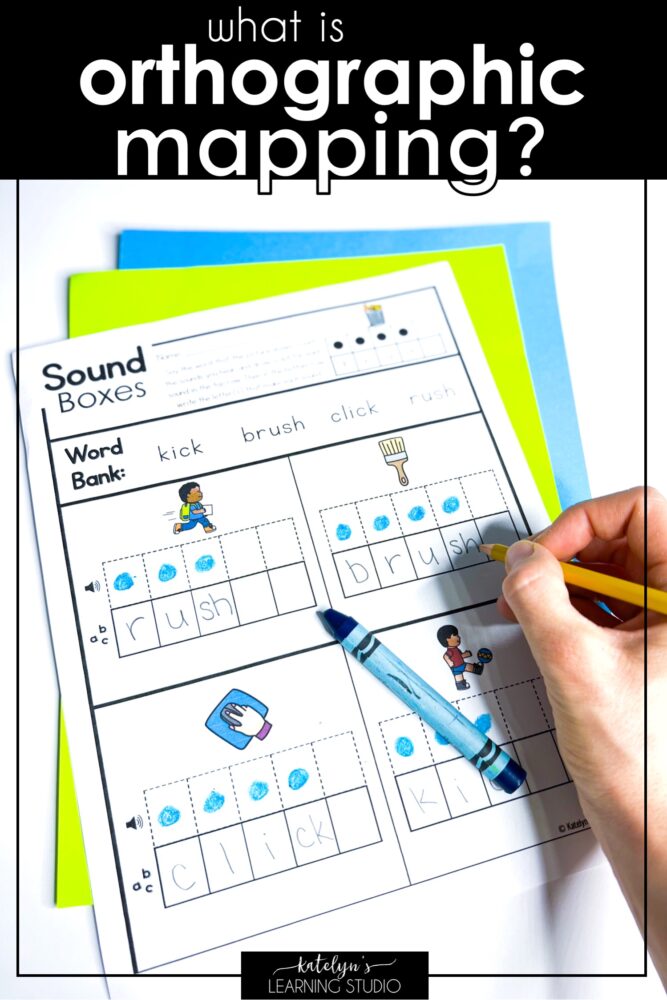Orthographic Mapping: the Key to Learn to Read
What is the secret to learning how to read that nobody really knows about? Orthographic mapping. It’s the brain’s way of turning new words into sight words and it is amazing. It is a key part of the science of reading, and it is so vital for all teachers to learn about!
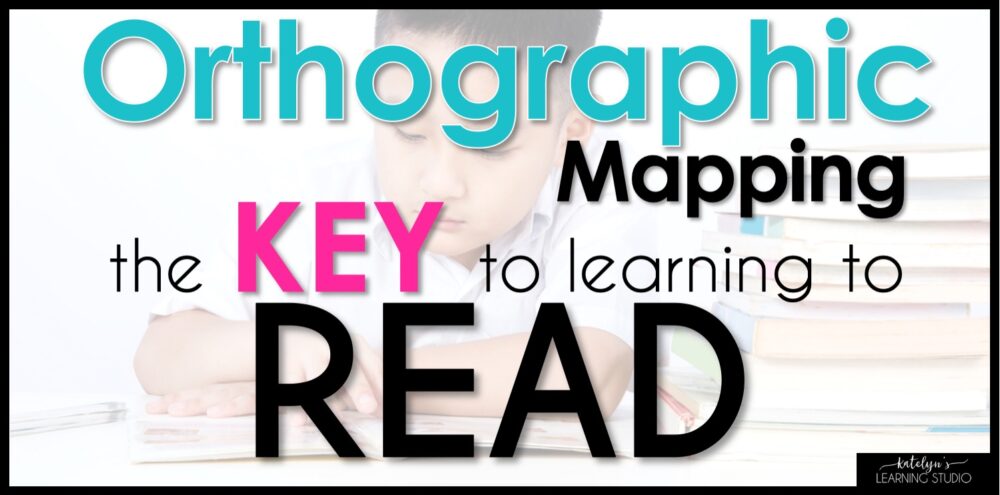
Learn to read through mapping sight words.
When all of the “normal” reading strategies fail to work for your struggling readers, it’s time to dive into the science of reading and look at the root of how kids learn to read. Then we can really pinpoint what they need and where they are falling short.
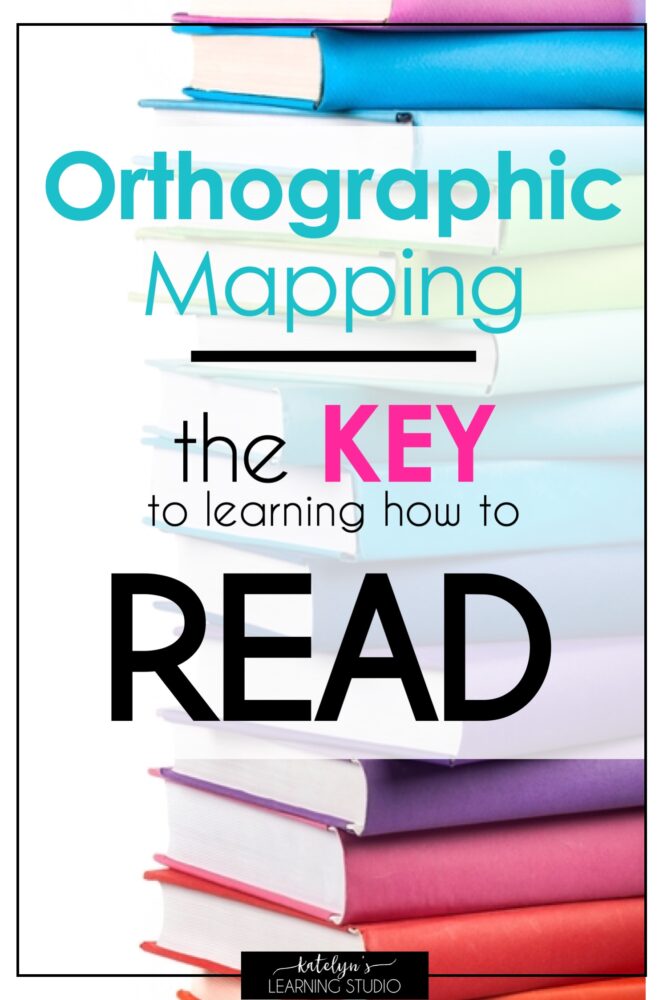
Orthographic mapping is the most powerful skill to help kids learn to read.
How do kids learn how to read?
Kids start to read fluently when they are able to turn new words into automatic words, or words they can just look at and know. What’s another word for this? Sight words! I’m not talking about a certain list of the top most commonly used words. I’m talking about any word you know by sight.
To be a proficient reader, you need to build up your “bank” of sight words so that you are able to look at a word and immediately read it. This lets you read quicker, more effortlessly, and lets you focus on the meaning of the text instead of trying to decipher the text.

Learning sight words means turning new words into automatic words via orthographic mapping.
But how do you add words to your bank of sight words? How do you turn words into instantly recognizable sight words?
Through orthographic mapping!
What is orthographic mapping?
Orthographic mapping is your brain’s way of turning words into sight words. Every time you come across a new word, you follow these 6 steps:
- Sound out the word
- Hear the separate sounds you say
- Your mind puts the sounds together to form a word
- You recognize the word (whether you’ve heard it before or know what it means)
- Your brain breaks the word BACK apart into sounds
- It attaches each of the sounds in the word to the letters you see on the page
All of this happens in a matter of seconds!
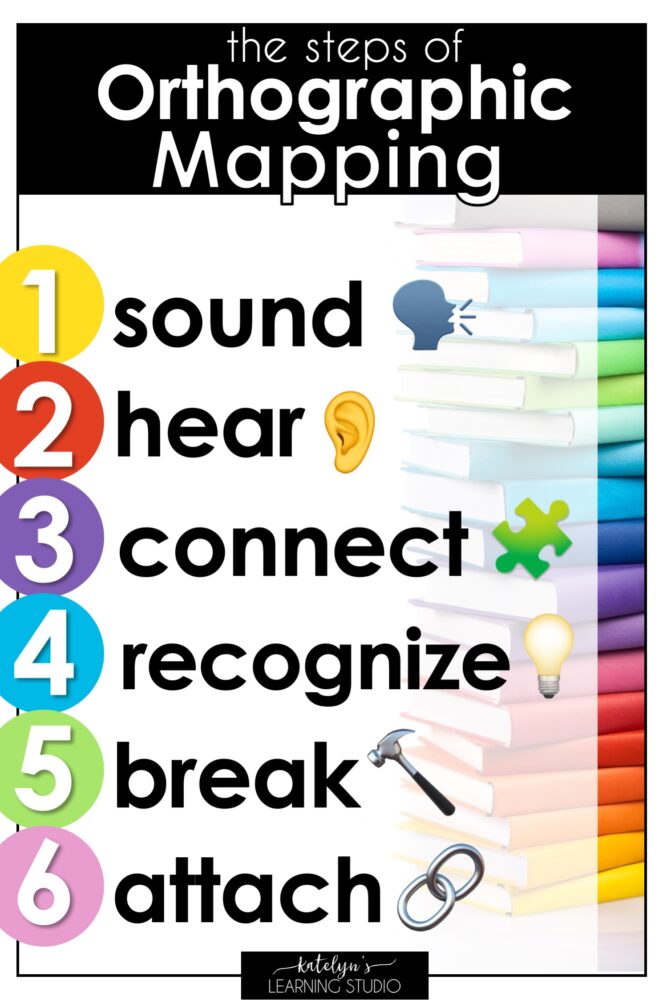
What is orthographic mapping? These are the steps the brain uses to form new sight words!
Your mind stores thousands of these orthographic maps to refer to when reading–one for each word you can read instantaneously.
Students who are proficient readers become very good at this process and quickly add words to their sight word bank as they read on their own. They call this situation the “Self-Teaching Hypothesis” (developed by David Share). Each time a student comes across a new word and sounds it out with success, that word is added to their sight word bank. The more a student reads on their own, the more they learn to read!
However, this “Self-Teaching Hypothesis” only works for students who have the skills they need to successfully sound out and map new words.
Some students are lacking skills that are essential for word mapping, which makes storing sight words very hard for them and causes reading difficulties.
Reading Research
Linnea Ehri was the original researcher behind orthographic mapping in the 1970’s, and one of the first to identify the process. It has since been confirmed and backed by many studies, and is now becoming widely accepted as the most accurate theory for learning how to read.
David Kilpatrick’s Orthographic Mapping Resources
David Kilpatrick explains this process beautifully in his book, “Essentials of Assessing, Preventing, and Overcoming Reading Difficulties”. This book really is the holy grail of reading intervention and covers absolutely every aspect of effective reading intervention in depth. If you are looking to dive deep into the reading process (& geek out with me!), you have got to give this book a read!
Orthographic Mapping Examples
Here are some examples of what orthographic mapping looks like in action:
- You see the word “rain” for the first time
- You sound out the word, using phonics knowledge (/r/, /A/, /n/)
- Your mind puts those sounds together to form the word /rain/
- You recognize that word! The water that falls from the sky.
- Your mind breaks apart the word again into sounds (/r/, /A/, /n/)
- You assign the /r/ to the letter “r”, the /A/ to the letters “ai”, and the /n/ to the “n”
- You have now created an orthographic map for the word to store in your brain!
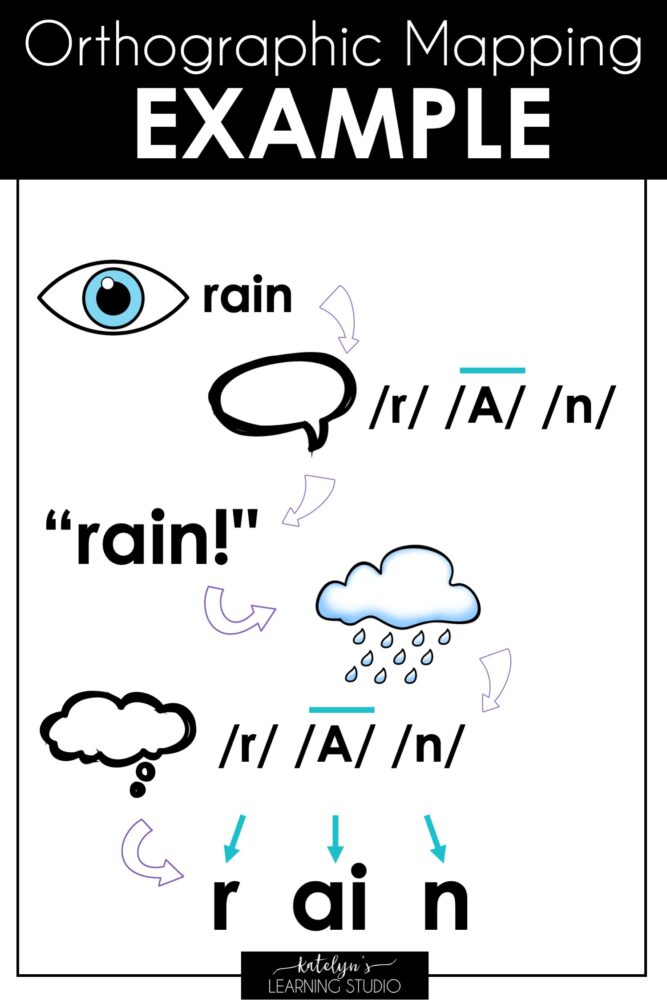
Here’s an orthographic mapping example so you can see it in action!
Word Recognition Skills
Common teaching practice is to give students a list of common but irregularly spelled words to memorize. Fry Words and Dolch Sight Words are two of the most popular lists.
There will be a great divide here. Some kids take off and memorize these words like champs, and some will falter and get stuck or move through the lists at a slooooow pace as they fall farther and farther behind.
This is because those students who are zooming through the list, are orthographic mapping! They already have all of the skills they need to be strong orthographic mappers and so they are naturally turning new words into automatic sight words.
Those students who are getting stuck, do not have the skills to be good orthographic mappers, so they are relying on visual memory–which is NOT a technique that will lead to reading proficiency. It might help keep them above water for 1st or maybe 2nd grade, but relying on memory alone becomes impossible once the student reaches 3rd grade and their peers are gaining new sight words exponentially.
Proficient readers only need exposure to new words 1-4 times before they become sight words. Struggling readers need 16-20 exposures, and even then might still not turn them into sight words.
This is why memorizing lists of sight words is not enough for reading intervention and helping struggling readers.
Sight Word Intervention to Promote Orthographic Mapping
Instead of memorizing high-frequency words for sight word intervention, the focus should be put on giving students the skills they need to become good orthographic mappers, and then giving them plenty of practice mapping words. I talk more about the skills students need to become good readers in this post on the Science of Reading.
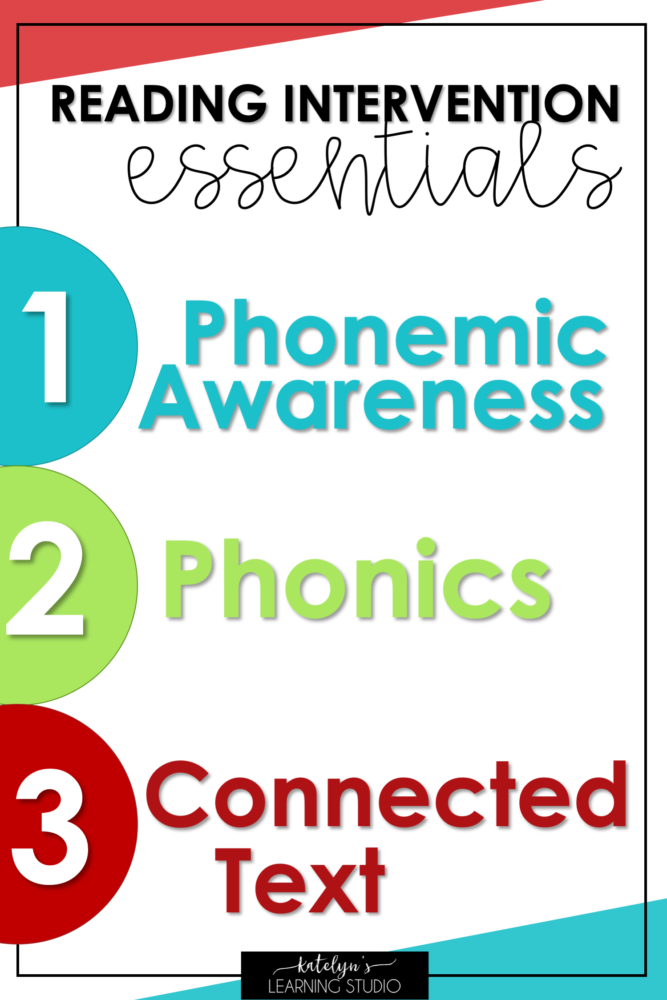
Reading programs for struggling readers should have these three essential components.
Reading intervention should focus on:
- Building a HIGH level of proficiency in phonemic awareness, all the way up to the most advanced level
- Building a HIGH level of proficiency in letter knowledge and phonics skills
- Giving time to practice reading text
How to Teach Orthographic Mapping
In addition to strengthening the building block skills of phonemic awareness and phonics, you can also give students structured practice with word mapping activities. Activities like these help teach the student how to break down and analyze new words with teacher support and are a great scaffold. However, the goal here is NOT to go through and map every single word the student will need to know during these activities. The goal is to help guide them to start thinking about the words they read, and also continue to build on those phonemic awareness and phonics skills they need to build sight words.
Orthographic mapping activities
-
Sound Chips→Letter Tiles
- Use manipulatives (like bingo chips, blocks, mini erasers, etc.) to represent sounds in words. Say a word and place one manipulative on the table for each sound in the word. Have the student point to the manipulatives and say the sounds. Practice blending and segmenting the sounds as you point to the manipulatives, or practice more advanced phonemic awareness skills like adding, deleting, or substituting sounds. Here’s a blog post on phonemic awareness strategies that you can use for more ideas!
- After you use the manipulatives to break down the sounds in words, bring out the letter tiles and build the words together. Lay the letter tiles next to each sound manipulative to connect the sounds to the letters.
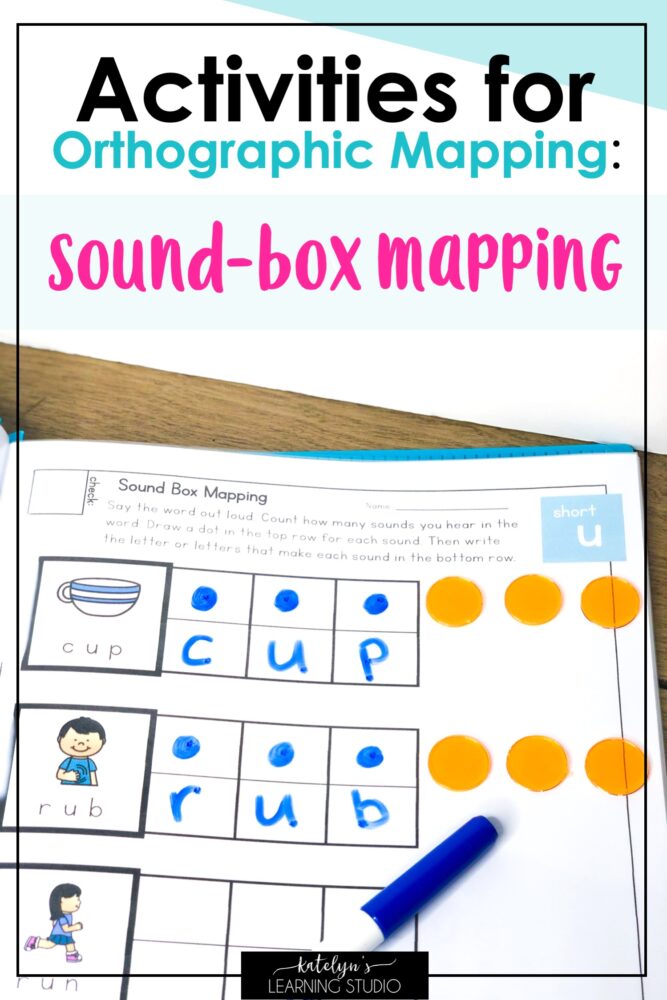
Use sound maps when teaching sight words to connect sounds to letters, like in my CVC Intervention folders.
-
Sound Boxes
- Sound boxes are a great, structured orthographic mapping activity. Have a blank chart with 2 rows and 5-10 columns (kind of like a ten-frame). Say a word and have the student count the sounds in the word, then put a manipulative in the top row for each sound (each sound has its own little box). Then show the student how the word is spelled. Have the student pair each sound with the letters that make it. Then cover the word and have them write the letters that match each sound in the box below each manipulative.
- For soundboxes already made for you, check out my CVC Intervention Folders or my Consonant Blends Intervention Folders!
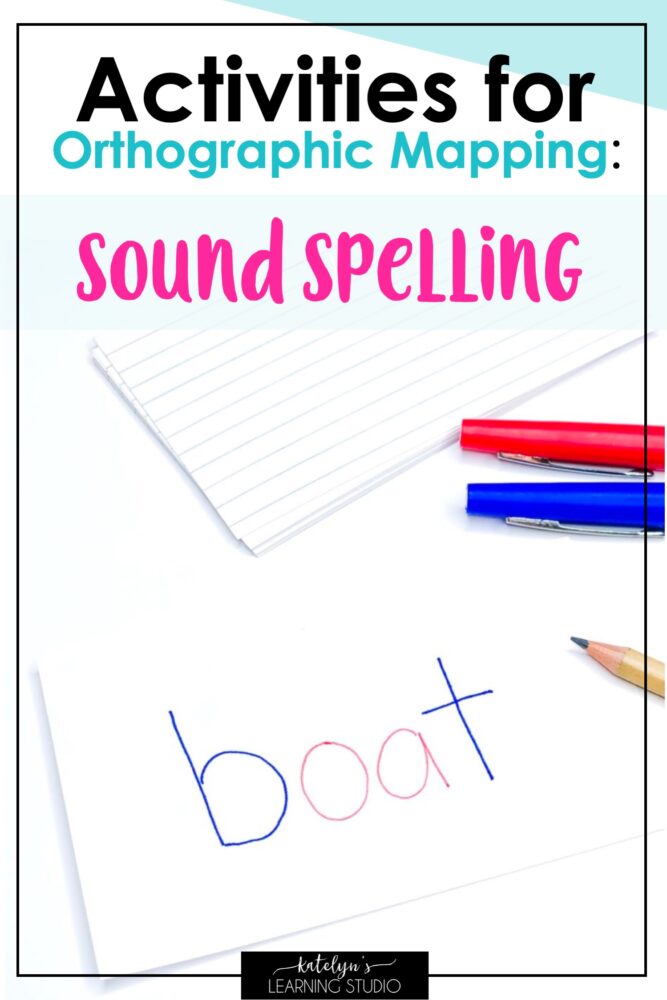
Spelling sight words out loud helps students pay attention to the specific letters in words.
-
Sound Spelling
- This one is pretty simple. Have the student say the sounds of the word out loud as they write the letters of the word.
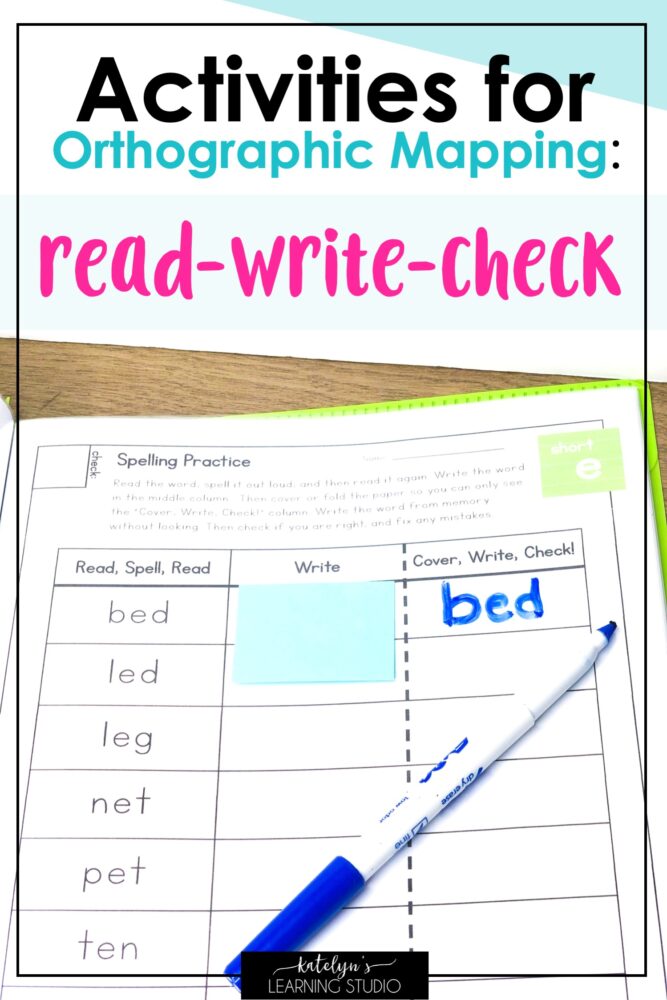
Spelling activities like this “read, write, check” page in my CVC Intervention Folders naturally facilitate orthographic mapping as students “attach” sounds in words to letters.
-
Read, Write, Check
- Fold a paper into 3 columns. Have students copy a word in the first column, then write it again (this time you could color-code vowels or phonics patterns) in the second column, then fold the paper over so you can’t see the words and have them write it from memory in the third column. Have them unfold the paper and check to see if they need to fix any mistakes. Make this activity reusable AND more engaging by printing out these pages from my CVC folders, sticking them in page protectors, and using dry-erase markers!
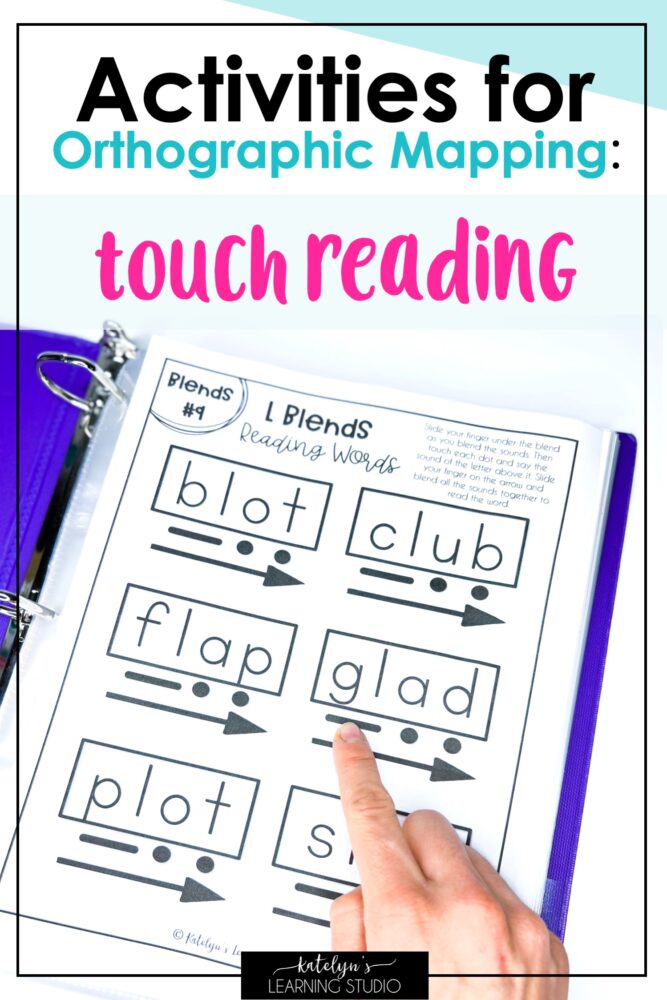
Effective phonics activities like these touch reading drills in my Phonics Intervention Binder can help students match sounds to letters.
-
Touch Reading
- Have a list of words with dots underneath each sound. Have students touch the dots as they say the sounds in the words. You can have students draw in their own dots for more advanced work. As they read harder words, you can add other symbols for blends, digraphs, and other phonics patterns as helpful visuals. (For LOADS of “print-and-teach” touch reading activities already made for you, check out my Reading Intervention Binders!)
Orthographic mapping is a key ingredient in successful reading intervention. It’s how kids learn to read, and it’s so valuable for teachers to know about. Planing orthographic mapping activities can help strengthen struggling readers in key reading skills and catch them up to their peers. Thanks to the science of reading, we can have a much better idea of how to help our kiddos!
